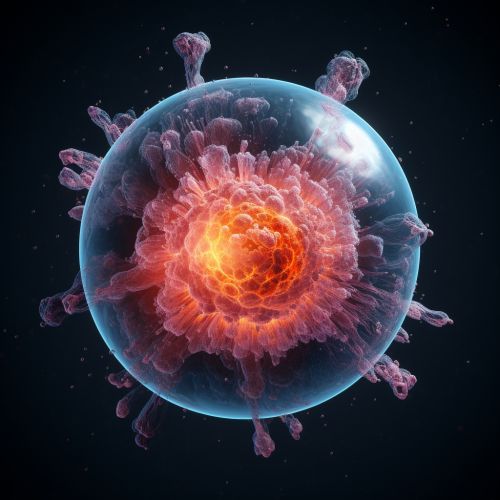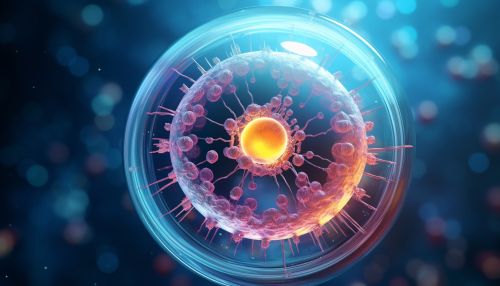Vesicle (biology and chemistry)
Introduction
A vesicle in the fields of biology and chemistry is a small structure within a cell, consisting of fluid enclosed by a lipid bilayer. Vesicles form naturally during the processes of secretion (exocytosis), uptake (endocytosis) and transport of materials within the plasma membrane. Alternatively, they may be prepared artificially, in which case they are called liposomes. Vesicles can be formed by the pinching off of a section of the membrane of a cellular structure, but can also be made in the laboratory from simple chemicals.
Structure and Composition
Vesicles are composed of a lipid bilayer membrane, surrounding an aqueous core. The lipid bilayer is a thin polar membrane made of two layers of lipid molecules. These membranes are flat sheets that form a continuous barrier around cells. The lipid bilayer membrane is semi-permeable, allowing only certain molecules to diffuse across the membrane. The lipid bilayer of a vesicle is composed of various types of lipids that include phospholipids and glycolipids, and proteins that include integral proteins, peripheral proteins, and lipid-anchored proteins.


Formation
Vesicles can form in a number of ways. In the case of vesicles that are formed naturally within cells, the process usually involves the budding off from an existing membrane. For example, vesicles can form from the plasma membrane, the Golgi apparatus, the endoplasmic reticulum, the endosomes, and in some cases, the mitochondria. The formation of vesicles within cells is an active process that requires energy, often in the form of ATP. The exact mechanism of vesicle formation can vary depending on the type of vesicle and the cell in which it is formed.
Functions
Vesicles perform a number of functions within a cell. They are involved in metabolism, transport, buoyancy control, enzyme storage, and contain various types of enzymes depending on the function of the vesicle. Vesicles also play a key role in the immune response, where they are involved in the processing and presentation of antigens.
Types of Vesicles
There are several types of vesicles, including vacuoles, lysosomes, and transport vesicles. Each type of vesicle has a specific function. For example, lysosomes contain digestive enzymes and are involved in the breakdown of waste materials within the cell. Transport vesicles are involved in the movement of materials between different compartments within the cell.
Artificial Vesicles
Artificial vesicles, or liposomes, are vesicles that are not formed naturally within cells, but are instead made in the laboratory. Liposomes can be made from a variety of lipids and can be used for a variety of purposes. For example, they can be used to study the properties of lipid bilayers, to deliver drugs or other substances to cells, or to study the function of proteins that are embedded in lipid bilayers.
